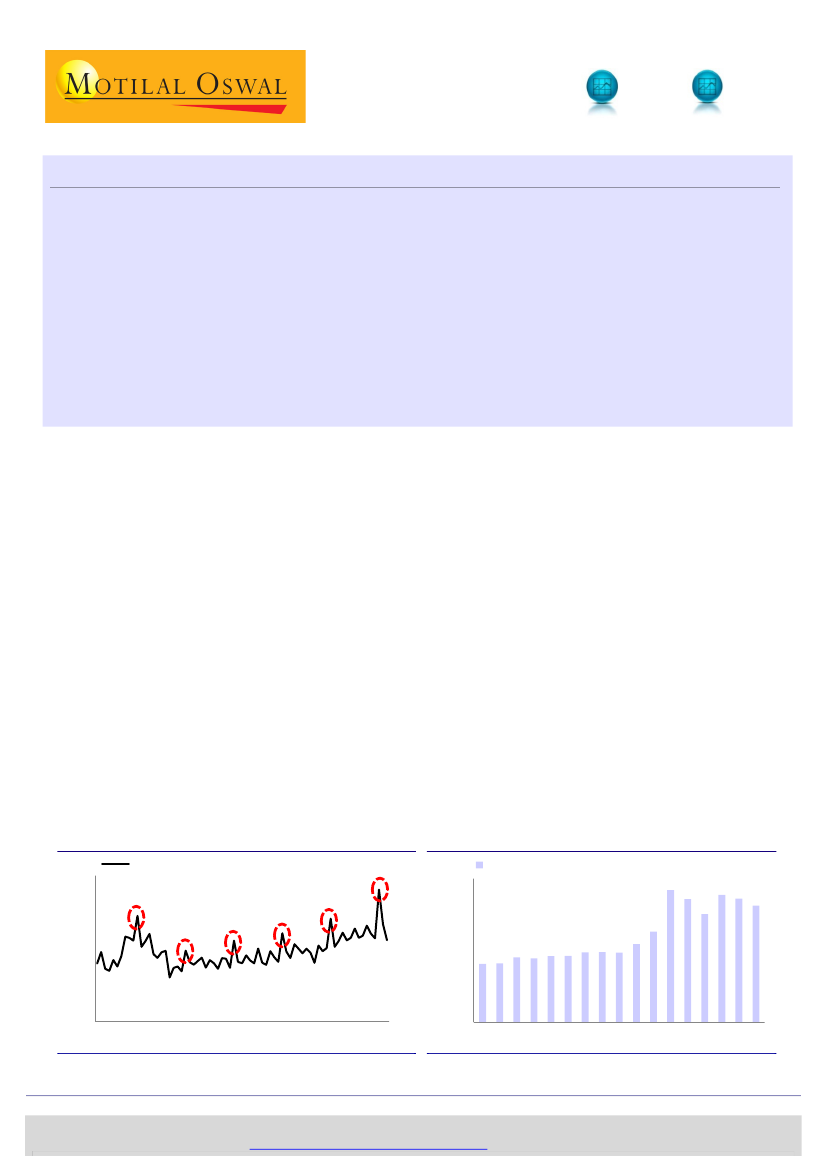
E
CO
S
COPE
Has demonetization led to higher digital payments?
Doubtful; ATM cash withdrawals back to pre-demonetization levels
19 June 2017
The Economy Observer
One of the key structural benefits expected from the historic demonetization announced in November 2016 was a shift
towards digital payments. However, the aggregate value of all transactions under electronic payment systems (EPS)
has failed to witness significant increase even six months post demonetization.
Further, while the value of transactions in retail digital modes (PoS, PPIs, IMPS and UPI) increased sharply in December
2016, it has stabilized at higher levels since then (up to May 2017). Similarly, while the volume of retail digital
transactions doubled by December 2016, there are no new net additions since then.
Finally, after falling by more than 60% in the last months of 2016, cash withdrawals from ATMs have moved back to
pre-demonetization levels. All these data points raise doubts over the desired structural shift towards digital payments
post demonetization.
Demonetization was seen as a boost to digital payments, since ~90% of transactions
were believed to be taking place in ‘cash’. Eventually, digitalization was expected to
help reduce tax evasion and corruption. However, available/estimated data up to
May 2017 raises doubts over the increased digitalization in the economy.
The total value of all
transactions under EPS
(electronic payment
system) has been broadly
unchanged since
demonetization, barring a
seasonal spike in March
2017
What do the aggregate numbers tell us?
One of the crudest ways to find out if digitalization has increased is to analyze the
aggregate value of transactions under electronic payments system (EPS) released on
weekly/monthly basis by the Reserve Bank of India (RBI). The total value of
transactions under EPS [consisting of eight (8) modes: Real Time Gross Settlement
(RTGS), National Electronic Funds Transfer (NEFT), Cheque Truncation System (CTS),
Immediate Payment Service (IMPS), National Automated Clearing House (NACH),
Unified Payments Interface (UPI), Debit/Credit Cards at Points of Sale (POS), and
Prepaid Payment Instruments (PPIs)) has been broadly unchanged since
demonetization
(Exhibit 1).
The spike in March 2017 could be explained as seasonal.
However, the volume of transactions has witnessed a durable increase
(Exhibit 2),
implying a significant fall in the value per transaction.
Exhibit 2:
… however, total volume of digital payments has
stabilized at higher level
1,600
1,200
800
400
Total volume of electronic payment systems (EPS)
(Unit m)
Exhibit 1:
Aggregate value of all digital payment transactions
didn’t witness any increase post demonetization…
200
150
100
50
(INR t)
0
May-11 May-12 May-13 May-14 May-15 May-16 May-17
Combined value of POS, PPIs, IMPS, RTGS, NEFT, UPI, CTS and NACH
Total value of electronic payment systems (EPS)
0
Jan-16
May-16
Sep-16
Jan-17
May-17
Source: Reserve Bank of India (RBI), CEIC, MoSL
Nikhil Gupta
(Nikhil.Gupta@MotilalOswal.com); +91 22 3982 5405
Madhurima Chowdhury
(Madhurima.Chowdhury@motilaloswal.com)
Investors are advised to refer through important disclosures made at the last page of the Research Report.
Motilal Oswal research is available on
www.motilaloswal.com/Institutional-Equities,
Bloomberg, Thomson Reuters, Factset and S&P Capital.